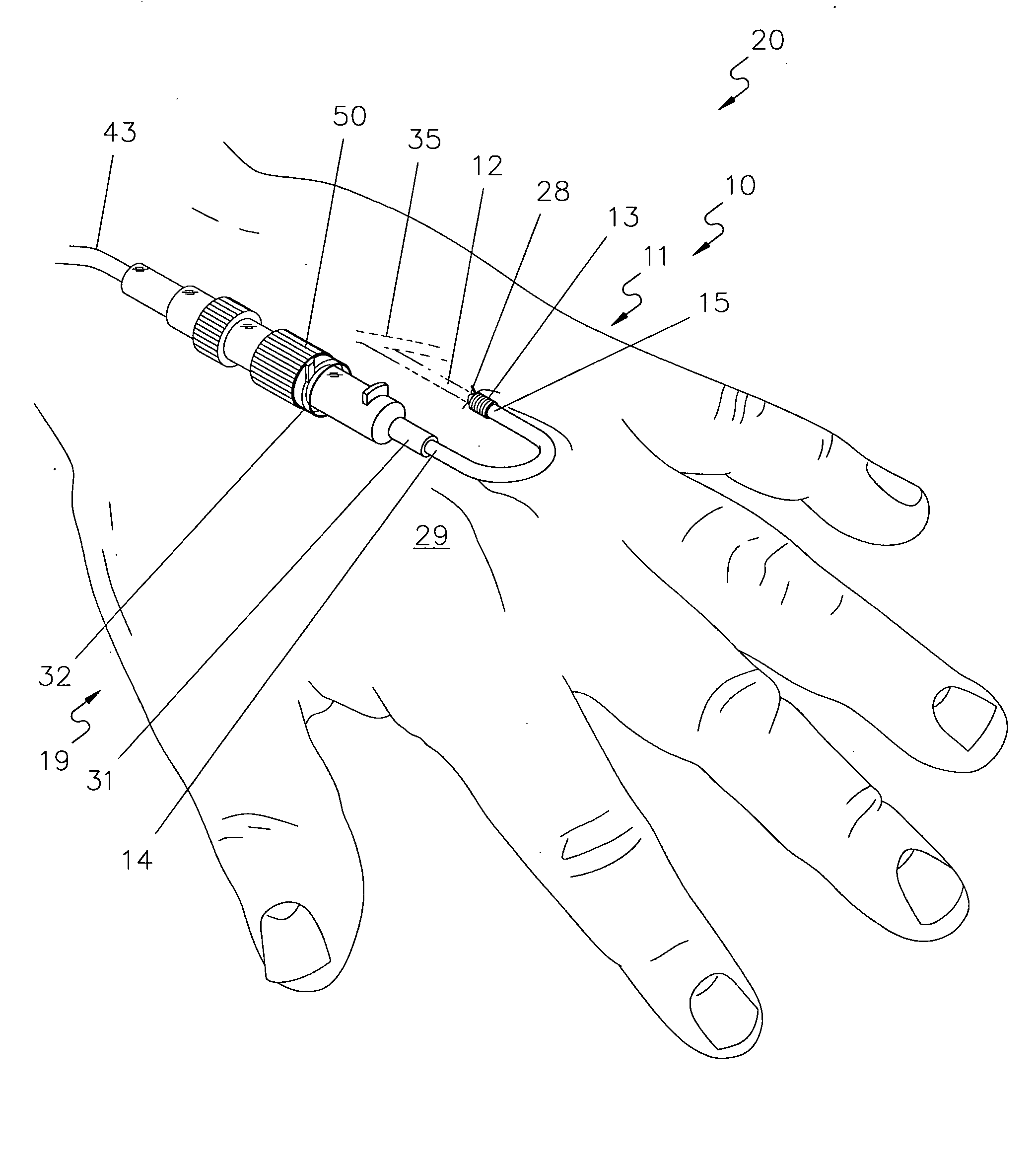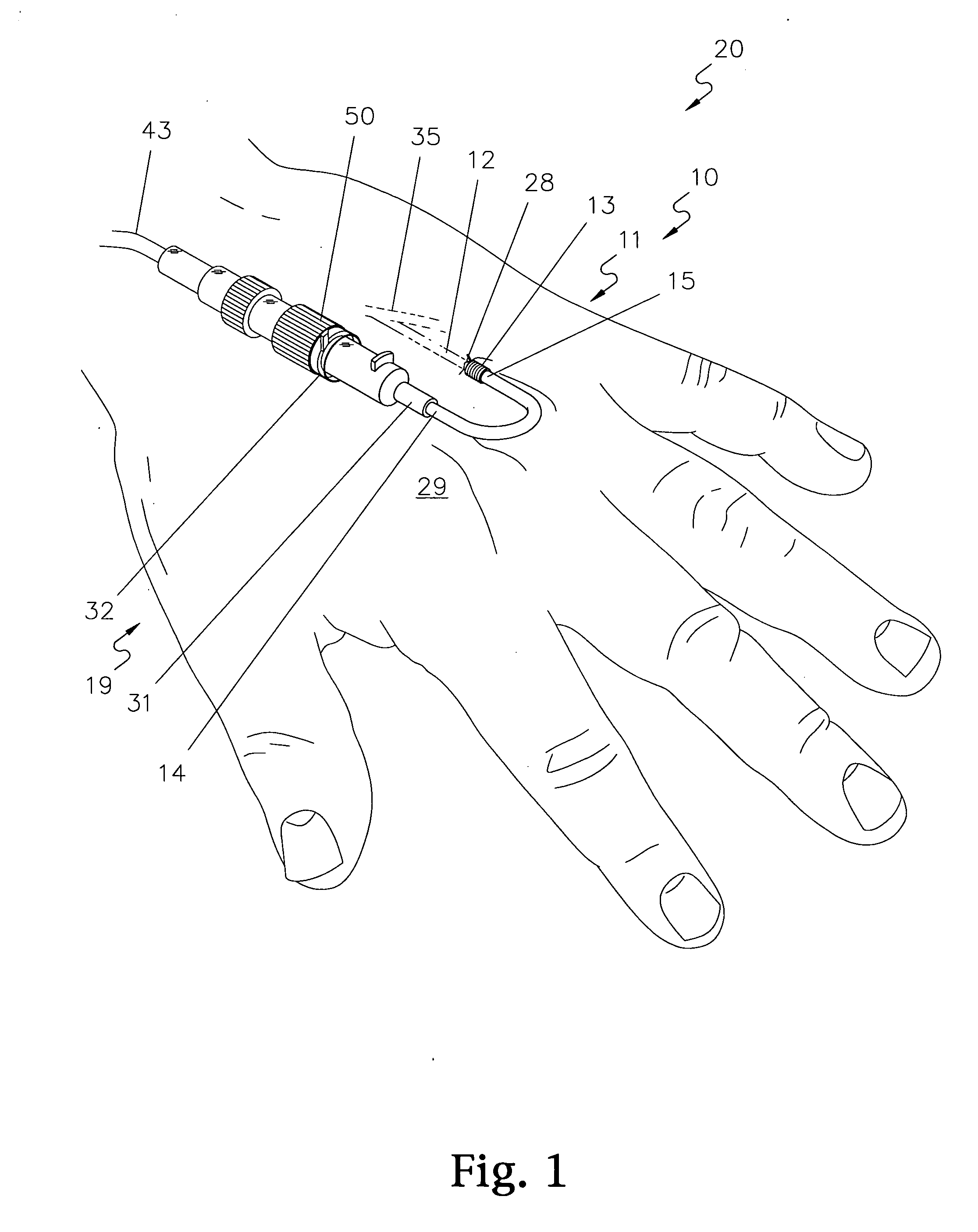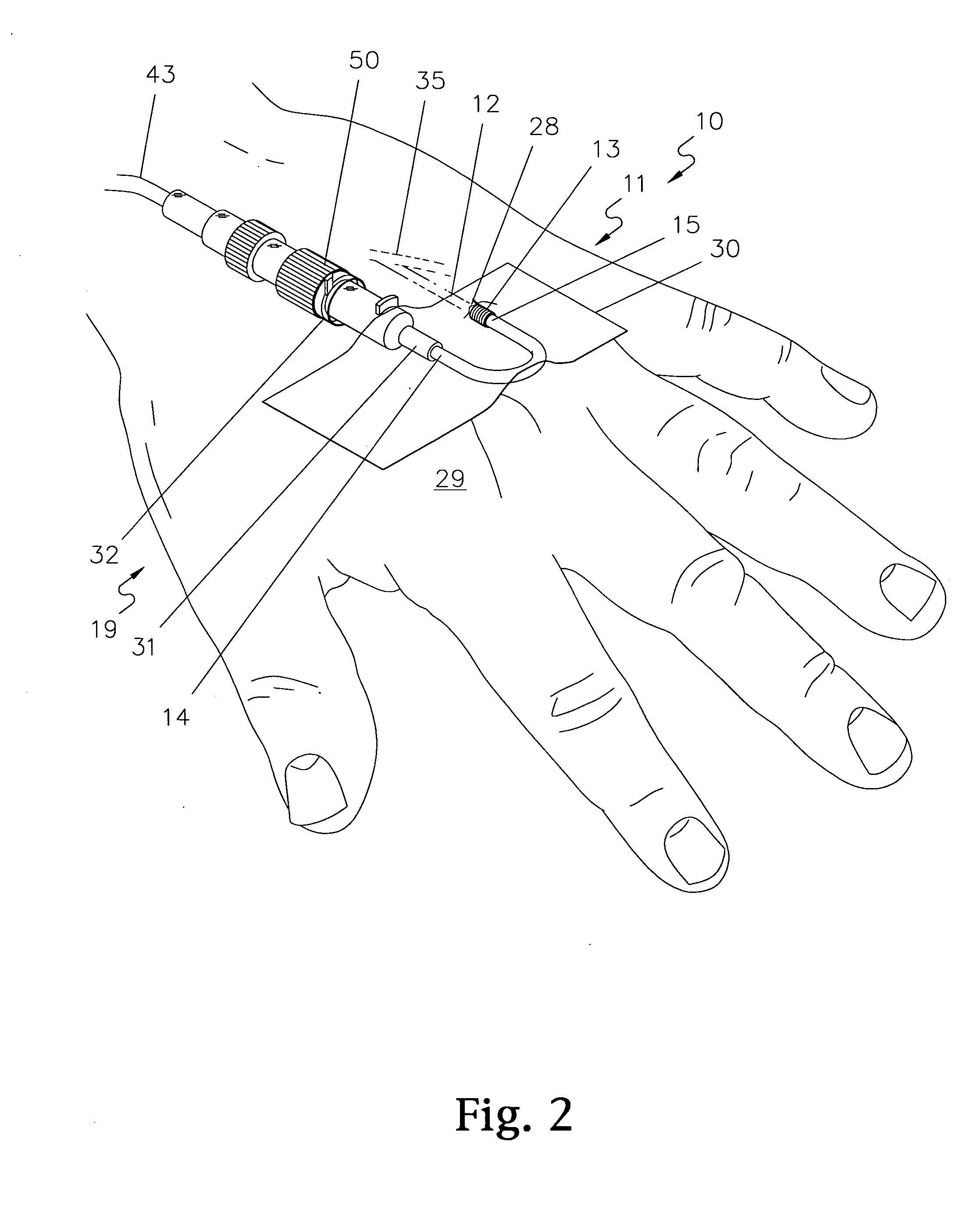Low-profile intravenous catheter device
a catheter device, low-profile technology, applied in the direction of trocar, other medical devices, infusion needles, etc., can solve the problems of inability to safely and comfortably infusion, inability to prevent the inability to intubate, and the above-described problems associated with the use of intravenous catheters, so as to reduce the likelihood of combative patients having to be restrained, reduce the likelihood of intubation, and reduce the effect of costs
- Summary
- Abstract
- Description
- Claims
- Application Information
AI Technical Summary
Benefits of technology
Problems solved by technology
Method used
Image
Examples
Embodiment Construction
[0020]In the following description, like reference characters designate like or corresponding parts throughout the several views. Also, in the following description, it is to be understood that such terms as “over,”“under,”“within,” and the like are words of convenience and are not to be construed as limiting terms. Referring in more detail to the drawings, a device embodying the principles and concepts of the present invention and generally designated by the reference numeral 10 will now be described.
[0021]Turning first to FIGS. 1 through 4, an intravenous catheter device 10 herein comprises: (a) a medical tubing connector, preferably a leak-free screw-type connector 19; (b) a length of flexible, non-kinking, supported medical tubing 11, a first end 14 of which is connected to a first end 31 of the screw-on connector 19; (c) an intravenous catheter portion 12 at an opposite, second end of the intravenous catheter device 10, a first end 16 of which is connected to a second end 15 of...
PUM
 Login to View More
Login to View More Abstract
Description
Claims
Application Information
 Login to View More
Login to View More - R&D
- Intellectual Property
- Life Sciences
- Materials
- Tech Scout
- Unparalleled Data Quality
- Higher Quality Content
- 60% Fewer Hallucinations
Browse by: Latest US Patents, China's latest patents, Technical Efficacy Thesaurus, Application Domain, Technology Topic, Popular Technical Reports.
© 2025 PatSnap. All rights reserved.Legal|Privacy policy|Modern Slavery Act Transparency Statement|Sitemap|About US| Contact US: help@patsnap.com



